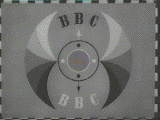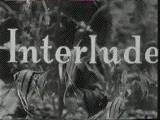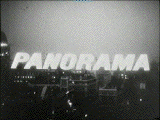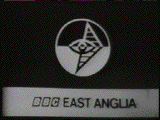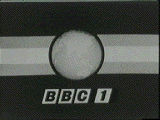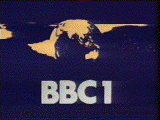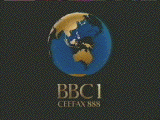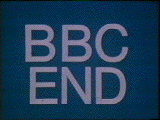|
|
|
|
|
|
The BBC (British Broadcasting Company/Corporation) started the world's first public television service at 3 p.m. on 2 November 1936, transmitting from Alexandra Palace (London, UK) to an audience of less than 400 sets. The transmitter range was only 30 miles, and programming was very minimal (an hour in the afternoon and an hour in the evening, and nothing on Sundays until February 1938) to begin with due to a lack of budget and studio facilities and also due to early concerns about eye strain - though staring for long periods at a small flickering screen must have been difficult ! |
|
|
|
Early television had plenty of interludes, which were essentially films shown between programmes - possibly the early equivalent of a 'computer screensaver' ! Pictures shown here are from two famous and/or memorable ones; the horses working in the field and the fish tank. Before World War 2 television was slow to catch on, largely due to the limited range of the transmissions, lack of programmes, and the cost of the receivers. |
|
|
|
The relatively high cost of early television sets before World War 2 meant that typically only wealthy people could afford them, so the programming was aimed generally at this upmarket audience, especially as the BBC itself was controlled by people from these affulent social groups. One set per street was very common, and families often visited friends or relatives who had a set in order to watch important events such as the Coronation in 1953. |
|
|
|
After World War 2 a comprehensive transmitter building programme ensured more people outside heavy populated areas such as London could watch television. The increase in viewers combined with competition from ITV by 1955 lead to new programme ideas being explored. Panorama was and still is the BBC's flagship current affairs programme, which tackles a single topical social and/or political issue in depth. The advent of video recording also meant the programmes could be recorded and shown more than once. |
|
|
|
In the 1960's the BBC was given the go-ahead to develop regional services to provide localised news, information and programmes, though each regional centre's contribution to overall programming, in contrast to ITV, was minimal (except for Scotland, Wales, and Northern Ireland where important cultural differences often meant more local programming). This caption was taken from a programme shown in 1969. |
|
|
|
The 1960's also saw the introduction of BBC2 in 1964, which enabled extra programmes which were not necesssarily of mass appeal to be shown, and eventually colour was introduced to (what was now known as) BBC1 by the end of the decade. Some very memorable and ground-breaking programmes were being produced during this period which are still being shown around the world today, such as Steptoe and Son, and the long-running Doctor Who series began. |
|
|
|
By the 1970's most families had at least one television set, and most people could receive programmes even if only a 405-line monochrome VHF signal was available, though all three channels were now transmitting a 625-line colour UHF signal to most parts of the United Kingdom. Nearly all programmes (except of course repeats of earlier shows) were in colour, with the exceptions mainly being programmes from some of the smaller regional centres which were slower to upgrade (for cost reasons). |
|
|
|
The 1980's was the era of the video cassette recorder or 'VCR'; although such devices were available in the 1970's (and earlier) it was this decade that saw them become widely available and (by 1987) inexpensive thanks to the aggressive pricing of Far Eastern-produced machines such as Amstrad. Teletext became commonplace on more expensive sets and included on some of the cheaper ones too. By 1985 the old 405-line VHF network had completely closed down, and by 1989 the BBC faced competition from the newly-emerging satellite services. |
|
|
|
All smoke and mirrors? The globe above was replaced with this smoky light reflecting version in the late 1980's, together with the return of the 1960's typeface. The word 'Stereo' appeared in the top-left hand corner when a programme with a stereo soundtrack followed (BBC1 was the last established UK channel to introduce Nicam stereo, which it did in September 1991, but not all transmitters had been upgraded to carry the digital signal from day one). |
|
|
|
The change from a globe to a balloon (albeit with a globe pattern) came at the same time as the BBC changed its onscreen font in October 1997 to something that was both traditional and forward-thinking (apparently it looks better displayed in the new widescreen format and when decompressed from a digitally-compressed datastream compared with the old sloping rhombus typeface that dates back to the 1960's). A variety of short video clips are used featuring the BBC balloon in different locations around the British Isles (above a castle, behind a suspension bridge, etc.) |
|
|
|
And finally...can anyone tell us when this caption was used? Of course it must have been used at the end of each day's transmission (ask a silly question !) but in what year(s) did the BBC use it? It was probably not long after the start of the colour service (early 70's) but can anyone give a more precise answer? |
